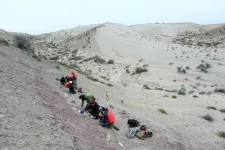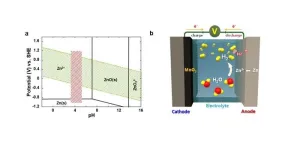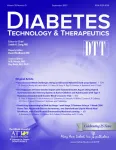In some scenarios, the researchers predict that the reduction in snowpack will be less than half what has been predicted—good news for the many people who rely on subsequent snowmelt in high mountains for water and food production, as well as for those who depend on winter recreation.
The findings come from scientists at the Department of Energy’s Pacific Northwest National Laboratory who weighed several factors that affect snowpack. These include warming temperatures, pollution, dust and even the shape of snow grains as they pack together on the ground.
The findings were published October 2 in Nature Communications.
Clean snow vs. dirty snow
“Snow is not just snow,” said Dalei Hao, first and corresponding author of the study. “There’s clean snow and there’s dirty snow, and how they respond to sunlight is very different. And then there are the shapes of the snow grains, which are anything but uniform. These all affect the snowpack.”
Of course, the warmer it is, the more snow melts. That’s why the coming decades spell bad news for mountain snowpacks and the people who rely on them. Researchers estimate that 2 billion people rely on spring and summer snowmelt in the mountains to provide fresh water for drinking and food production. If mountain snow melts faster or earlier than usual, that spells trouble—swollen rivers and flooding in the spring, then parched crops and wells in late summer.
“There have been a lot of alarming projections about the future snowpack. It’s a critically important issue,” said PNNL scientist Ruby Leung, also a corresponding author of the study. “The Himalayas, for instance, are the headwaters for several major rivers in southeast and eastern Asia. The condition of the snowpack in mountains has a direct effect on the quality of life for millions of people.”
Of all the factors affecting future snowpack, the biggest in the study were temperature and the effect of dark particles like pollution and dust. Those particles absorb more sunlight than pure snow, warming faster and passing along the sun’s warmth to nearby snow. That’s why snow peppered with dark specks melts faster than clean snow.
These particles come from human activity, such as car and truck emissions or burning wood. Or they can come naturally from blowing dust—though how much dust blows and settles on snow is often a direct result of what people do.
While clean snow reflects an estimated 80 to 90 percent of sunlight, dirty snow reflects less—a huge variable that the PNNL team said has not been studied as thoroughly as the effect of temperature. Researchers believe that cleaner snow can be expected in the future, due to less pollution and less wood burning.
Warmer air vs. cleaner snow
But the cleaner snow will most certainly come at a time of warmer temperatures, which lower the snowpack in many ways. The simplest explanation is that less precipitation falls as snow and more as rain. Warmer temperatures also melt the snow that has fallen.
“Warming temperatures and cleaner snow are competing effects,” said Leung. “Our paper indicates that the warming effect is dominant, but that cleaner snow will cancel out some of the effect. We are not saying that snow will increase in the future. We’re saying that snow will not decrease in the future as much as it otherwise might.”
The researchers studied snowpack trends in high mountains in the Northern Hemisphere, using 1995-2014 as the historical basis. That period of rising temperatures and a dirty snowpack was a recipe for a very fast snow melt. Then they modeled snowpack trends from 2015 to 2100 using two different scenarios, one where carbon dioxide emissions continue to rise markedly and one where emissions decline. The team focused on the Tibetan Plateau in Asia and the western United States.
In both scenarios, temperatures are expected to warm; the deposition of dark particles known as black carbon is expected to decrease; and dust is expected to increase.
If carbon dioxide emissions rise due to continued fossil fuel use in a scenario known as the Shared Socioeconomic Pathway or SSP 585, temperatures rise significantly. When changes in dark particles aren’t considered, the team estimates a snowpack loss of about 58 percent. But cleaner snow from less pollution—even with more light-absorbing dust—reduces that loss by 8 percent.
If carbon dioxide emissions are curtailed significantly (SSP 126), snowpack loss is much less. When changes in dark particles aren’t considered, the team estimates a snowpack loss of about 15 percent. But when the cleaner snow is factored in, snowpack loss is slashed by more than half—52 percent.
The diversity of snow grain shapes and other factors
Anyone who has driven in a blizzard can attest to the chaos and uncertainty that can be caused by snow. That’s also true for scientists like Hao who are finding a not-so-subtle effect of snow grain shape.
Earlier this year, Hao and colleagues noted that the varied shapes of real snow grains make snow melt more slowly than in models where grains are assumed to be uniformly spherical. Spherical snow grains would absorb more sunlight and melt more snow; the odd shapes of real flakes reflect more sunlight and melt less snow. The findings were reinforced this summer by a team of French scientists.
That would mean that real snow packed on the ground melts more slowly than many models using “spherical flakes” have indicated. That’s part of the reason for the team’s findings.
A bevy of other factors come into play as well. For example, warmer temperatures translate to more wildfires, producing more dark particles. But Hao notes that wildfire activity peaks in the summer and fall, before snow falls in heavy amounts in the mountains, so the effect in late spring when snow melts would likely be minimal.
Then there’s the loss of “biological soil crust,” where bacteria, lichens, algae and other organisms infiltrate and stabilize the soil surface. Researchers expect this type of soil to be reduced as temperatures warm—one reason, along with increased land development, that more dust is expected in the future.
]
While there are many factors in play, the PNNL team found that rising temperatures and reduced dark particles are the two most powerful factors influencing the future snowpack.
“Most models have not looked at these two effects, warming and dirty snow, together when projecting future changes,” said Leung. “It’s important to do so, because they can have opposite effects. Determining which one is the more dominant influence is a key to determining the fate of the snowpack in the future.”
In addition to Hao and Leung, authors include PNNL scientists Gautam Bisht, Hailong Wang, Donghui Xu, Huilin Huang and Yun Qian.
The research was funded by DOE’s Office of Science. The team used computing resources at the National Energy Research Scientific Computing Center, a DOE Office of Science user facility at Lawrence Berkeley National Laboratory.
# # #
END





